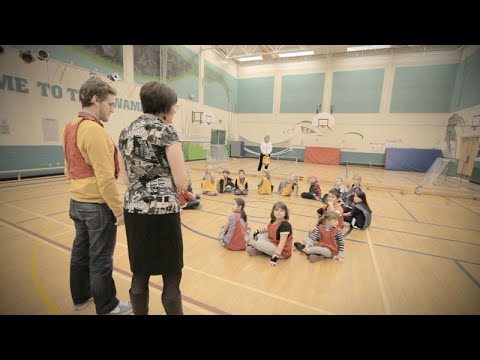Career Overview
School principals and administrators of elementary and secondary education plan, organize and direct the academic affairs of a school system, as well as the activities of teachers and other staff.
School principals and administrators of elementary and secondary education work for school boards and for public and private schools.
Job Titles
Duties
School principals:
- Plan, organize and direct, through department heads or supervisors, the activities of teachers and support staff
- Review programs to ensure conformance to school board or provincial standards and develop programs within limits of authority
- Co-ordinate the teaching activities of the institution by making staff assignments, determining class size and preparing timetables
- Organize and maintain procedures for the keeping of records
- Prepare and carry out institution or program budget
- Direct and co-ordinate school maintenance services and the use of school facilities
- Recruit and hire teachers and other staff
- May teach
Administrators of elementary and secondary education:
- Plan, organize and direct, through school principals, the academic affairs of a school district
- Evaluate educational program, teaching methods and community participation in programs and revise programs as required
- Develop and carry out programs for the education and training of students and adults
- Make recommendations concerning the annual operating budget of a school district
- Direct or supervise the recruitment, appointment, training, evaluation and promotion of teaching staff
Earnings
Earnings is income that workers receive in exchange for their labour. Depending on the type of employment, earnings can be in the form of wages (hourly), salaries (fixed monthly or annual) or self-employed earnings.
Work Environment
# Workers Employed
4,325% Employed Full Time
95%Work in this occupation is typically performed in a structured environment, such as an office or school.
Career Pathways
There is little mobility between institutional settings, for example, between elementary and secondary schools.
Related Careers
Occupational Interests
It’s important to understand what kinds of occupations align with your interests.
For more about occupational interests visit Skills for the Future Workforce > Characteristics.
Here are the top occupational interest(s) for this career profile:
Education, Training and Skills
- A bachelor's degree in education is required
- A master's degree in education may be required
- Several years of experience as a senior teacher or department head are required
- A teacher's certificate for the province of employment is required
- School principals may require a principal's certificate
- Administrators of elementary and secondary education may require a supervisory officer certificate
Education programs in B.C.
The following program areas are related to this occupation:
- Elementary/Secondary Teaching Related

Skills
Every job calls for a certain set of skills. Knowing those skills is the first step in finding a good career fit.
Here, you will find the 10 most relevant workplace skills. Some are more important to achieving success in a certain career than others. These skills may come naturally to you or you may need to gain them through education, training and experience.
See the list of work-related skills below, ranked in order of importance for this career. Check out the list and see if this career matches your skills—take that first step!
Talking to others to share information effectively.
Using logic and reasoning to identify the strengths and weaknesses of alternative solutions, conclusions or approaches to problems.
Considering the relative costs and benefits of potential actions to choose the most appropriate one.
Giving full attention to what other people are saying, taking time to understand the points being made, asking questions as appropriate, and not interrupting at inappropriate times.
Being able to solve novel, ill-defined problems in complex, real-world settings.
Being aware of others’ reactions and understanding why they react as they do.
Understanding written sentences and paragraphs in work-related documents.
Communicating effectively in writing as appropriate for the needs of the audience.
Adjusting actions in relation to others' actions.
Identifying measures or indicators of system performance and the actions needed to improve or correct performance, while meeting the goals of the system.
Labour Market Statistics
Discover data, facts and information that have been gathered and analyzed. Learn about the characteristics of the economy and labour market in B.C.
Employment
Find out about employment types and trends by region and industry.
Employment
4,325Employment by Region







| Region | Employment | % Employment of this Occupation |
|---|---|---|
| Cariboo | 160 | 3.7% |
| Kootenay | 165 | 3.8% |
| Mainland/Southwest | 2,520 | 58.3% |
| North Coast and Nechako | 145 | 3.4% |
| Northeast | 75 | 1.7% |
| Thompson-Okanagan | 460 | 10.6% |
| Vancouver Island/Coast | 795 | 18.4% |
Labour Market Outlook
The B.C. Labour Market Outlook is a 10-year forecast of the expected supply and demand for labour in the province. It’s usually updated every year. The purpose is to provide British Columbians with the knowledge to make informed decisions on careers, skills training, education and hiring.
Forecasted Job Openings (2024-2034)
2,850Forecasted Job Openings
Forecasted Employment Growth Rate
Composition of Job Openings
Job Openings by Region (2024-2034)







| Region | Job Openings | Avg. Annual Employment Growth |
|---|---|---|
| Cariboo | 50 | -1.5% |
| Kootenay | 100 | 0.1% |
| Mainland/Southwest | 1,740 | 1.6% |
| North Coast and Nechako | 60 | -0.1% |
| Northeast | 40 | -0.1% |
| Thompson-Okanagan | 300 | 0.6% |
| Vancouver Island/Coast | 560 | 0.9% |
Industry Highlights
Learn about the opportunities in B.C.'s major industries, including employment trends, earning potential, locations of work and more.
Forecasted Job Openings by Industry
| Industry | Job Openings (2024-2034) |
|---|---|
| Educational Services | 2,850 |
Resources
Resource information is currently not available.









